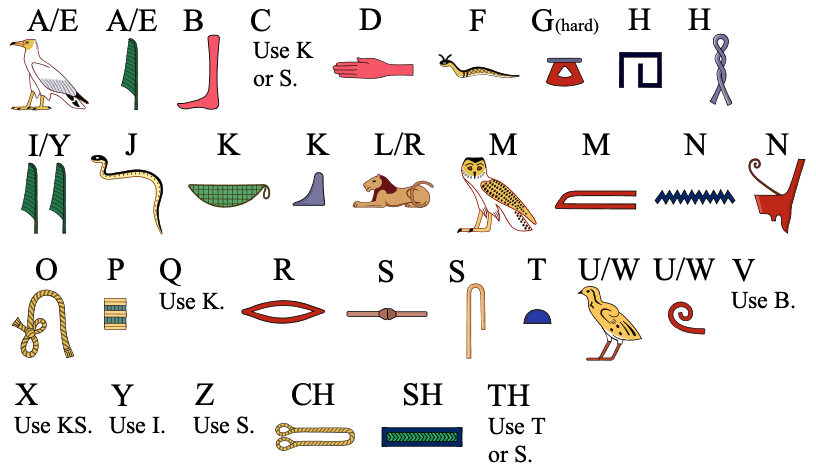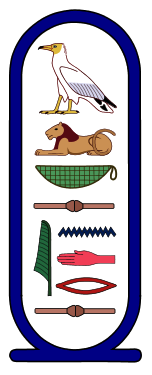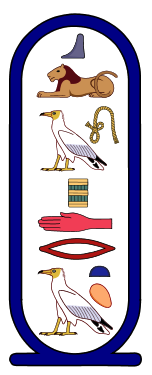

By referring to the table of hieroglyphs below, see if you can translate a few royal names. We'll look at Greek names, because they should be familiar.

Note: The names below were written during the Ptolemaic period. During this period, the Egyptian language did not distinguish between T and D. The hand hieroglyph, for example, could be written for T or D. Also, Egyptian did not distinguish between K and G.
 |
The cartouche at left contains a name which is still popular today. Read from top to bottom, left to right. Not all the vowels are written. Alexander the Great. Conquered Egypt in 332 BCE. |
 |
The brown egg, beside the last vulture, indicates
that this name represents a goddess or a queen.
The final T, just above the egg, is silent. The name of this queen is well known. Several queens of Egypt had this name. The last and most famous, Cleopatra VII, had a talent for persuasion. |
|
 |
The top hieroglyph represents a bowl with two incense balls and
rising smoke. In Middle Egyptian, its phonetic value was Bꜣ,
but here it represents B. The final T is silent. Both Bernice and Veronica are derived from this name. |
 |
The last hieroglyph is an unknown object. In Middle Egyptian,
it had a phonetic value Sꜣ, but here it represents S. This name is still in use today, although its pronunciation has changed. In the 4th century BCE, the Greek letter Phi was pronounced as an asperated P. This sound became F much later. |